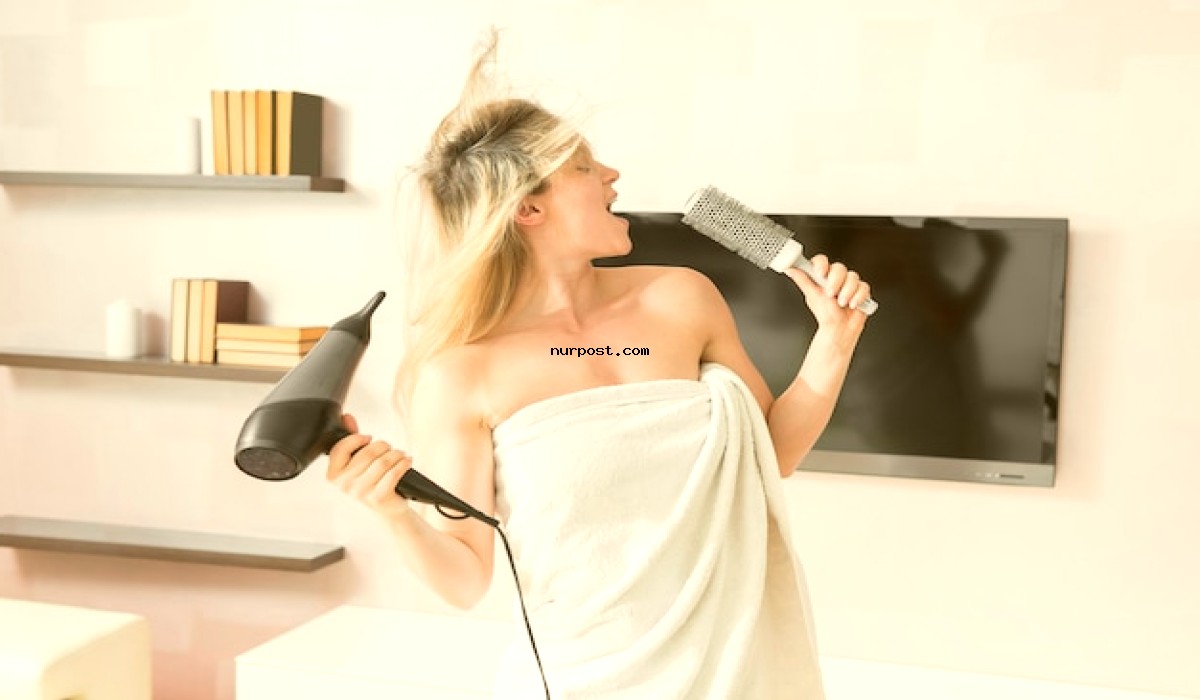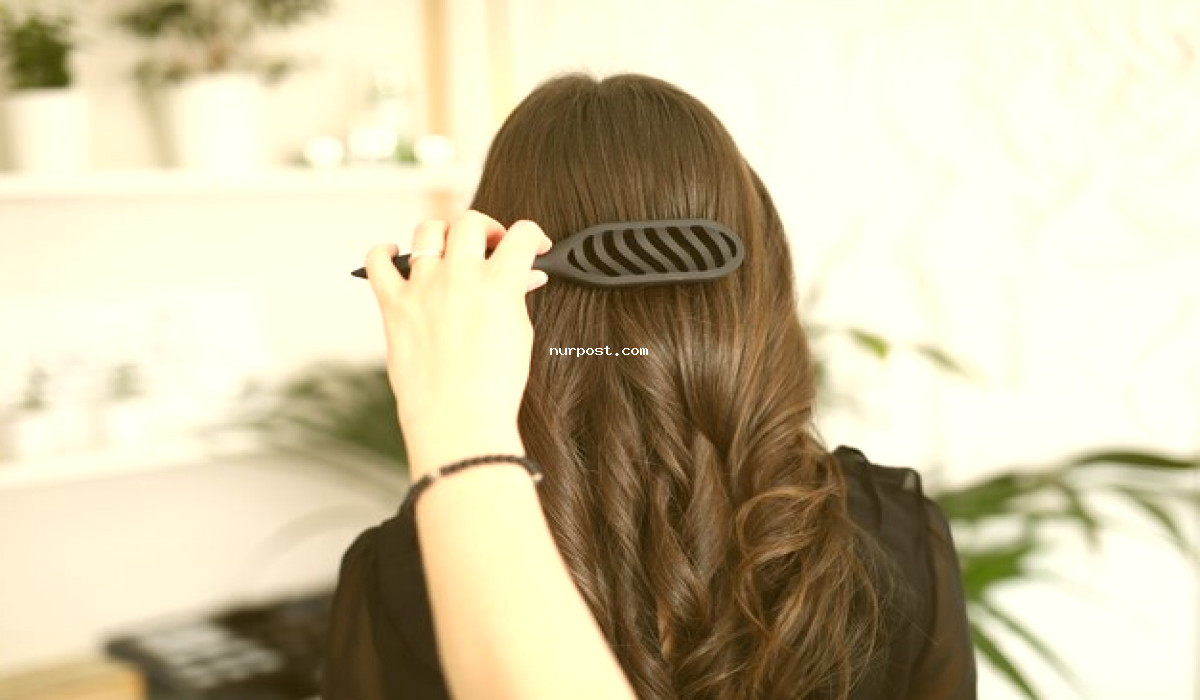Ultimate Heatless Curl Guide for Straight Hair
As an experienced article writer, I have done extensive research on heatless curling methods and can offer valuable insights to help you achieve the perfect curls. In this comprehensive guide, I will cover various techniques, tips, and tricks to help you transform your straight hair into fabulous curls. So, sit back, relax, and get ready to become a heatless curling pro!
Table of Contents
| Sr# | Headings
| — | —
1 | Introduction |
2 | Types of Heatless Curling Methods |
3 | Tools and Products Needed |
4 | Preparation before Curling |
5 | Step-by-Step Guide for Each Method |
6 | Tips and Tricks for Long-Lasting Curls |
7 | How to Maintain Heatless Curls |
8 | Pros and Cons of Heatless Curling |
9 | Common Mistakes to Avoid |
10 | Conclusion |
11 | FAQs |
Introduction
We all have hair goals, and for many of us, that includes achieving gorgeous curls. However, constantly using heat styling tools can cause excessive damage to our hair, leading to dryness, breakage, and frizz. Heatless curling is an excellent alternative that allows us to have beautiful curls without causing harm to our hair.
Before we dive into the various heatless curling methods, let’s first understand what heatless curls are. Simply put, heatless curls are created without using any heat – no hairdryers, straighteners, or curling irons. Instead, these curls are achieved through various methods that use your hair’s natural texture, moisture, and sometimes, a little bit of product to create stunning, long-lasting curls.
Now, let’s explore the different types of heatless curling methods.
Types of Heatless Curling Methods
Bantu Knots
Bantu knots are a type of heatless curls that originate from African hair. This method involves dividing your hair into small sections and twisting each section into a knot, similar to the shape of a cinnamon bun. These knots are then left to dry, and when unravelled, they form beautiful ringlet curls.
Flexi Rods
Flexi rods are long, bendable, and foamy hair rollers that can be used to achieve different types of curls, including loose waves and tight spirals. This method requires wrapping small sections of damp hair around the flexi rods and securing them in place. The longer you leave them in, the tighter the curls will be.
Headband Curls
This method is perfect for those who prefer to sleep while their hair is being styled. It involves tying a headband around your head, wrapping small sections of damp hair around it, and leaving it overnight. The end result is soft and bouncy curls.
Pin Curls
Pin curls are created by twisting small sections of hair, forming a circular pattern, and pinning them to the scalp. This method can be done on dry or wet hair, and the size of the sections determines the size and tightness of the curls.
Twist-Outs
Twist-outs are a simple yet effective heatless curling method. This method involves twisting small sections of damp hair, leaving them to dry, and unraveling them to reveal defined, springy curls.
Tools and Products Needed
The great thing about heatless curling is that you don’t need any fancy tools or expensive products. Here are some essential items you’ll need to achieve heatless curls:
– Hair ties, bobby pins, or hair clips
– Flexi rods or curlers
– Moisturizing hair products (leave-in conditioner, curl cream, or mousse)
– Hair spray (optional)
– Scarf or bonnet (if leaving curls in overnight)
Preparation before Curling
Before starting any heatless curling method, make sure your hair is clean and damp. You can either wash your hair or dampen it with a spray bottle. This helps the products better absorb into your hair, resulting in more defined and longer-lasting curls.

Another crucial step before curling is to detangle your hair. This ensures that the curls are smooth and don’t get tangled while styling. You can use a wide-tooth comb or your fingers to gently detangle your hair.
Step-by-Step Guide for Each Method
Now, let’s dive into the step-by-step process of achieving heatless curls using the various methods mentioned earlier.
Bantu Knots
– Divide your damp, detangled hair into small sections.
– Take one section and twist it tightly until it starts to curl into itself.
– Wrap the twisted section into a knot, securing it with a hair tie or bobby pin.
– Repeat until all sections are twisted into knots.
– Leave them in overnight or until your hair is completely dry.
– Unravel the knots and fluff or separate the curls with your fingers.
Flexi Rods
– Divide your damp, detangled hair into small sections.
– Take one section, apply a curling product, and wrap it around the flexi rod, starting from the bottom and rolling upwards towards the scalp.
– Secure the flexi rod in place.
– Repeat until all sections are wrapped around flexi rods.
– Leave them in for a few hours or overnight.
– Unwrap the rods and gently separate the curls with your fingers.
Headband Curls
– Place a headband around your head, just above your ears.
– Take small sections of damp, detangled hair and wrap them around the headband, twisting as you go.
– Secure the hair in place and continue until all hair is wrapped around the headband.
– Leave it overnight or until hair is completely dry.
– Unwrap the headband and gently separate the curls with your fingers.
Pin Curls
– Divide your hair into small sections.
– Take one section and twist it, shaping it into a circular pattern.
– Pin the twist to your scalp with bobby pins.
– Repeat for all sections.
– Leave them in overnight or until your hair is completely dry.
– Remove the pins and gently separate the curls with your fingers.
Twist-Outs
– Divide your damp, detangled hair into small sections.
– Apply a curling product to each section.
– Twist each section until the hair is tightly coiled.
– Leave them in for a few hours or overnight.
– Unravel the twists and separate the curls with your fingers.
Tips and Tricks for Long-Lasting Curls
– Before trying any heatless curling method, make sure your hair is completely dry. This will prevent the curls from falling flat.
– Apply a curling product to each section before styling to help define and hold the curls better.
– For tighter and more defined curls, use smaller sections of hair.
– If your curls fall flat quickly, use a scarf or bonnet to secure them in place while sleeping.
– To add volume to your curls, use a hair pick or fluff them gently with your fingers.
– Use a small amount of hair spray to lock in the curls and prevent them from falling out.
How to Maintain Heatless Curls
Heatless curls can last for a few days or even up to a week, depending on your hair type and the method used. To maintain your curls, you can:
– Sleep with a silk or satin scarf or bonnet to prevent the curls from getting squished or frizzy.
– Use a hair pick or brush to gently fluff the curls and revive them.
– Apply a small amount of moisturizing product to keep the curls hydrated.
– Use a small amount of hair spray to refresh and hold the curls in place.
Pros and Cons of Heatless Curling
Pros:
– No heat damage
– Versatility in curl types
– Low-cost method
– Can be done at home with no professional help
– Long-lasting results
Cons:
– Some methods may require overnight setting
– Not suitable for all hair types
– Results may vary based on hair texture and length
– May take longer to achieve compared to using heat tools
Common Mistakes to Avoid
– Not detangling before styling
– Using too much or too little product
– Not waiting for hair to dry completely before removing the curls
– Using the wrong size or type of curler for your desired curls
– Not securing curls overnight, resulting in flat hair in the morning
Conclusion
Heatless curling is an excellent alternative to using heat styling tools that can cause damage to our hair. With various methods to choose from, you can achieve your desired curls without compromising on your hair’s health.
Ultimate Heatless Curl Guide for Straight Hair
Remember to always detangle, apply a curling product, and be patient for the best results. Happy curling, beauties!
FAQs
Q: Can I use heatless curling methods on colored or chemically treated hair?
A: Yes, heatless curling methods are safe to use on colored or chemically treated hair as they do not involve exposing your hair to heat.
Q: How often should I heatlessly curl my hair?
A: It’s best to give your hair a break in between styling sessions, so we recommend only heatlessly curling your hair 1-2 times a week.
Q: Can I achieve heatless curls with short hair?
A: Absolutely! Some methods may need to be tweaked for shorter hair, but all these heatless curling methods can be done on any hair length.
Q: Which heatless curling method is best for coarse or thick hair?
A: Bantu knots or twist-outs are excellent options for those with coarse or thick hair as they offer tighter and more defined curls.
Q: Will my curls last longer if I use more product?
A: No, using too much product can weigh down your hair and cause your curls to fall out faster. Use a small amount of product for best results.
Q: Can I use heatless curls on dry hair?
A: For best results, it’s recommended to use heatless curling methods on damp hair. However, you can spray your dry hair with water before styling if needed.
Q: Is it okay to comb or brush my hair after achieving heatless curls?
A: No, you should only use your fingers or a hair pick to gently fluff your curls. Combing or brushing can cause your curls to separate and lose definition.
